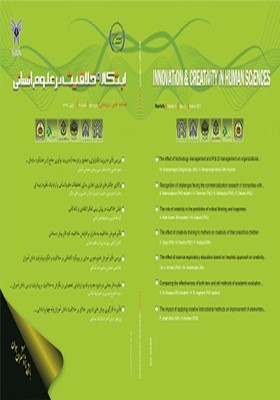-
-
List of Articles
-
Open Access Article
1 - The effect of technology management and R & D management on organizational performance
M. Ghanbarinejad Esfaghansary A. Mohammadi Almani -
Open Access Article
2 - Recognition of challenges facing the commercialization research in humanities with present a grounded theory
B. Mahmoudpour H. Rahimian A. Abbaspour A. Delavar -
Open Access Article
3 - The role of creativity in the prediction of critical thinking and happiness
A. Allah Karami Kh. Aliabadi -
Open Access Article
4 - The effect of creativity training to mothers on creativity of their preschool children
K. Ganji B. Niusha F. Hedayati -
Open Access Article
5 - The effect of science exploratory education based on heuristic approach on creativity and achievement motivation of students
Gh. A. Ahmadi Sh. Abdolmaleki -
Open Access Article
6 - Comparing the effectiveness of both new and old methods of academic evaluation in attitude of primary school pupils
S. M. Mousavi H. R. maghami -
Open Access Article
7 - The impact of applying creative instructional methods on improvement of elementary pupils' creativity
P. Jebelli Adeh A. Sobhani
-
The rights to this website are owned by the Raimag Press Management System.
Copyright © 2021-2025







